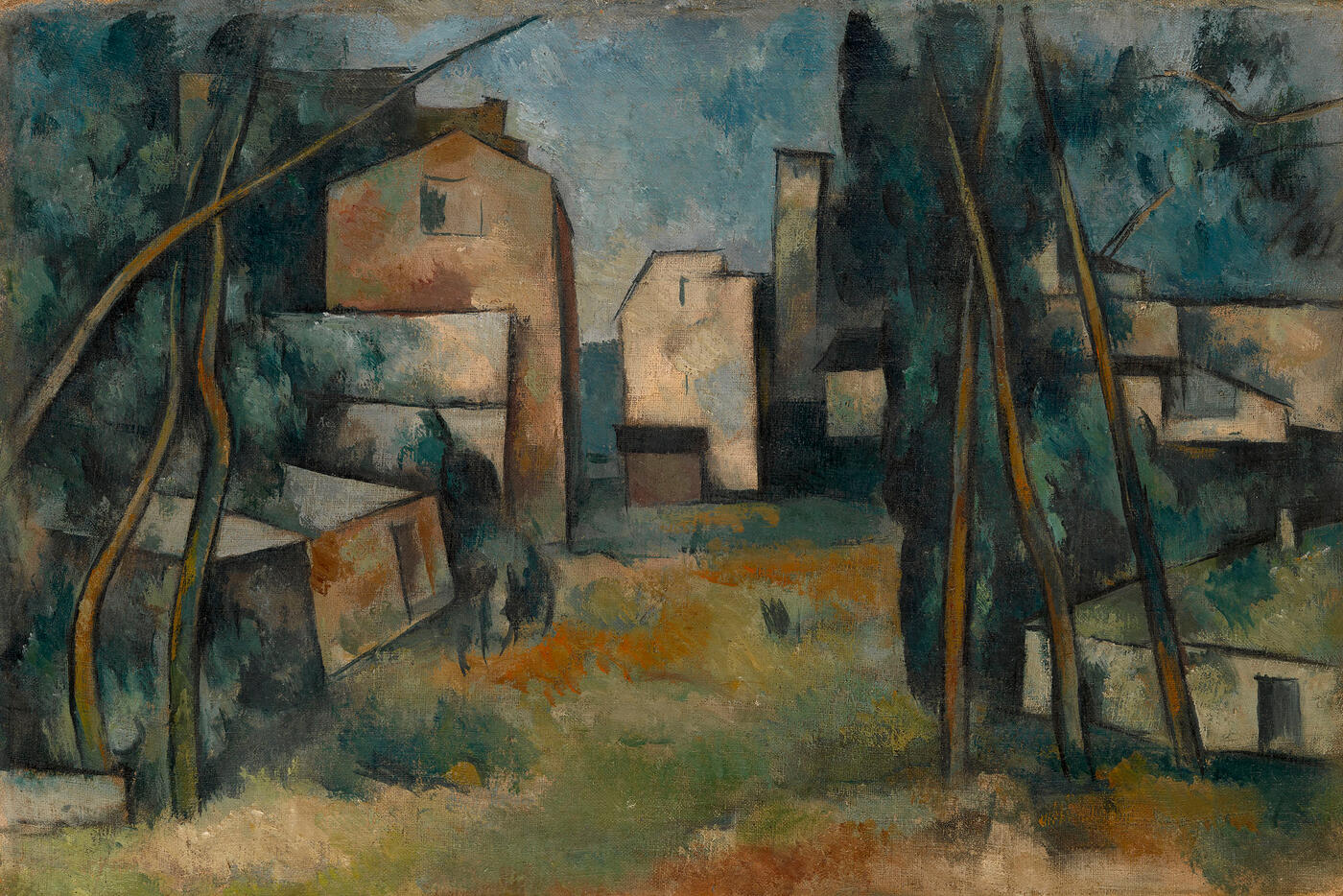MacDougall's Russian Art Auctions 27-30 May 2012
27 May 2012

* 23. SHEVCHENKO, ALEXANDER (1883-1948)
Outskirts of a Town, signed with initials and dated 1919.
Oil on canvas, 49.5 by 73 cm.
285,000–400,000 GBP
Provenance: Acquired directly from Tatiana Shevchenko, the artist’s daughter, in 1968, Moscow.
Collection of Kh. Kagan.
Private collection, Europe.
Authenticity certificate from the expert T. Levina, curator of the A. Shevchenko exhibition at the State Tretyakov Gallery in 2010.
Exhibited: A.V. Shevchenko, Moscow House of Artists, 19 January 1976.
A.V. Shevchenko, The State Russian Museum, Leningrad, 1977.
Literature: Exhibition catalogue, Alexander Shevchenko 1883–1948. Zhivopis’, akvarel’, guash’, tempera, risunki, gravyury, monotipii, Moscow, Soyuz khudozhnikov SSSR, 1978.
Outskirts of a Town dates from Alexander Shevchenko’s best period, the late 1910s and early 1920s, during which he created his own, exceptionally harmonious and lyrical version of Cézannism. Shevchenko’s brand of lyricism in this period is unique. It is not based on the manifestation of heartfelt emotions, but in the experience of the beauty of plasticity itself. It is no coincidence that the sculptural way the landscape is rendered is built on a dialogue between the long, thin, bare tree trunks stretching aloft and the massive, chopped-up cubes and parallelepiped forms of the buildings. The way their faceted forms alternate creates a two-dimensional space subordinated to a strict rhythm. The complex linear structure of the composition is built on the desire for precise, almost mathematical correlations in the proportions,
and balance in the masses of colour.
At the same time, no less important to the landscape than the constructive principle are its fine tonal relationships and musical rhythm – everything that helps to express the artist’s mood and poetic reasoning. The restrained chromatic structure of the canvas and the painstaking development of its tones of green and ochre are highly characteristic. The landscape is unpopulated, which lends it a special emotional poignancy. This sense of isolation from the bustle of life and slight desolation has its own special majesty and solemnity. At the end of the 1910s, and much later too, Shevchenko loved to paint quiet little corners on the outskirts of Moscow, still free from the invasion of the trappings of modern life, where the provincial look of places reminded him of his childhood.
Among the paintings most closely analogous to the present lot are: Landscape with
Washerwomen (1920, The State Russian Museum), Courtyard. Moonlit Evening (1920, The State Russian Museum), and Landscape. Houses (1920, The State Russian Museum).
Notes on symbols:
* Indicates 5% Import Duty Charge applies.
Ω Indicates 20% Import Duty Charge applies.
§ Indicates Artist's Resale Right applies.
† Indicates Standard VAT scheme applies, and the rate of 20% VAT will be charged on both hammer price and premium.